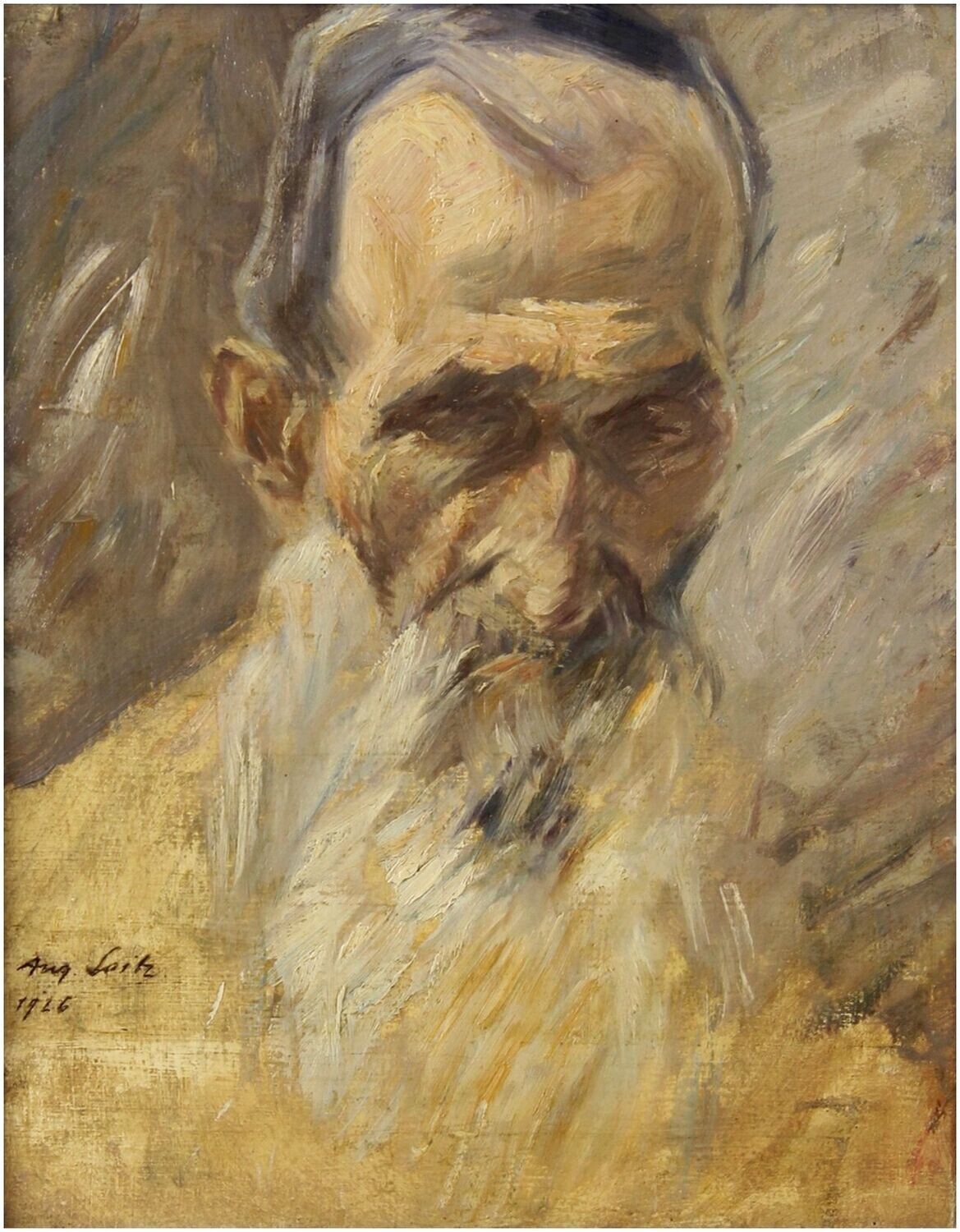Seitz, Friedrich August (1902-1944), Half-length portrait of an elderly bearded man, 1926
Friedrich August Seitz(1902 Staffort - 1944 Belgrade), Half-length portrait of an elderly man with a beard. Oil on canvas, 42 x 34 cm (visible seize), 58 x 50 cm (frame), signed and dated lower left "Aug. Seitz. 1926". In an Art Nouveau frame with gilt stucco and black lacquered moulding.
- Melancholy of a prophet
-
The head shown is not the portrait of a real person, but aims at a much more general dimension of meaning that transcends the individual person. Such expressive heads were called 'tronies' in the Netherlands from the 16th century onwards and flourished in the 17th century. But they go back much further, to the sculptural rows of apostles and prophets in Gothic cathedrals. And it is precisely to these that Friedrich August Seitz refers. The head, which is shown in a slight top view and appears almost gaunt, looks like a prophet's head with its flowing white beard. This is reinforced by the deeply shadowed eye area, which refers to the topos of the 'blind seer'.
The head is given a particular liveliness by the light colours and the loose application of paint, which at first glance seem to counteract the darkness of the prophecy, and by which the picture follows in the footsteps of the art of Frans Hals and Max Liebermann. The head seems to materialise directly from the paint, which has been applied with the greatest virtuosity, while the brushwork around the head and the apparently untreated ground enliven the figuratively undefined surface. The concretion of the head, however, culminates in the shadowed eye area, which repeatedly draws the eye to itself and thus to the invisible. In this way, Friedrich August Seitz manages to revive the ancient theme of the prophets in a highly expressive way, using the same painterly means as Frans Hals and Max Liebermann used for their predominantly profane subjects.
About the artist
Friedrich August Seitz studied at the Karlsruhe Art Academy under Prof. August Babberger from 1923 to 1927. After his studies he worked as a fashion draughtsman for Schöpflin in Hagen and then as a technical draughtsman for the Badische Landesvermessung in Karlsruhe. He was drafted into the Wehrmacht in 1939 and died on a train to Belgrade in 1944.

